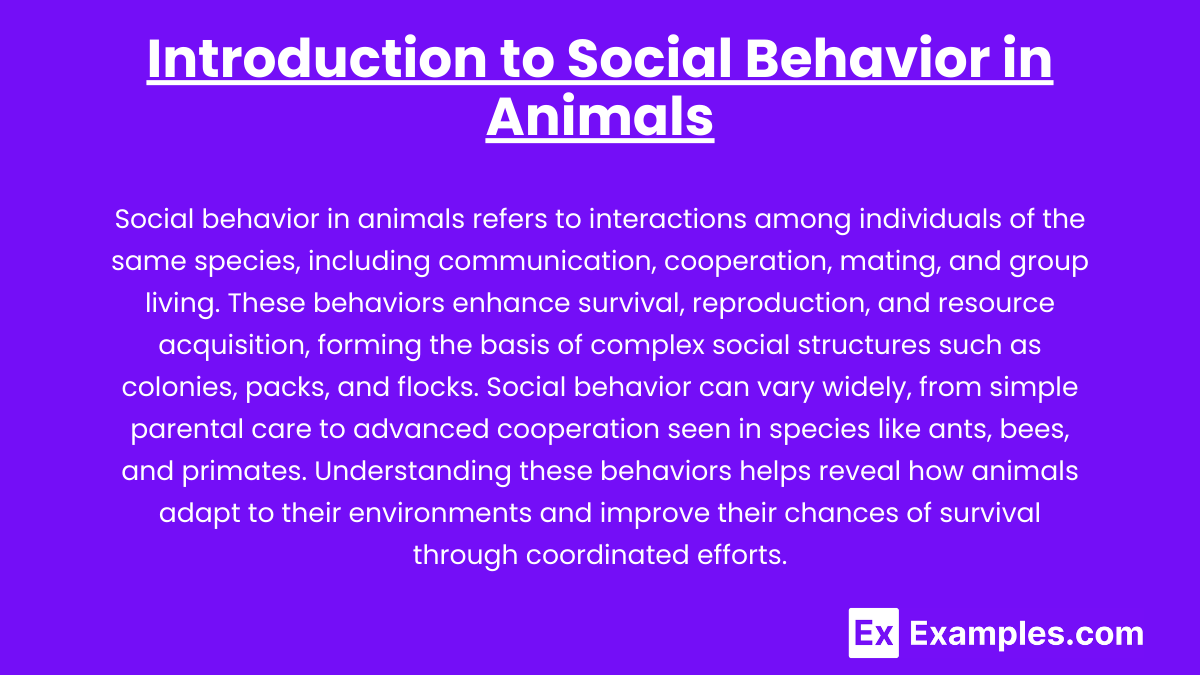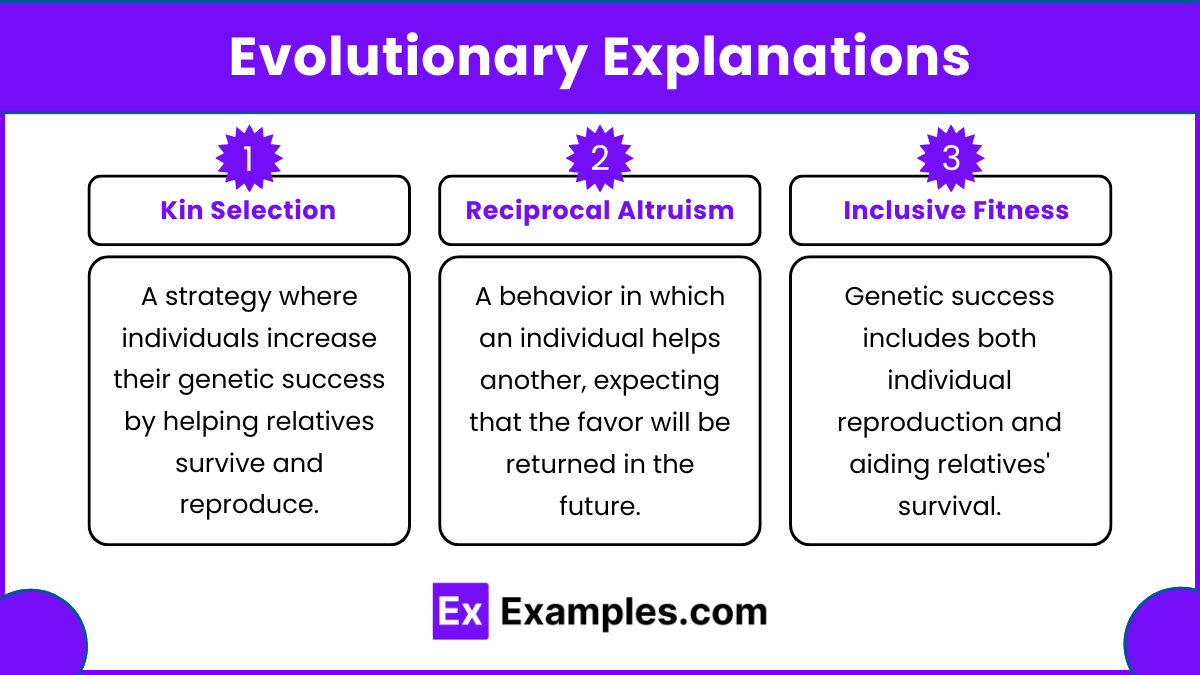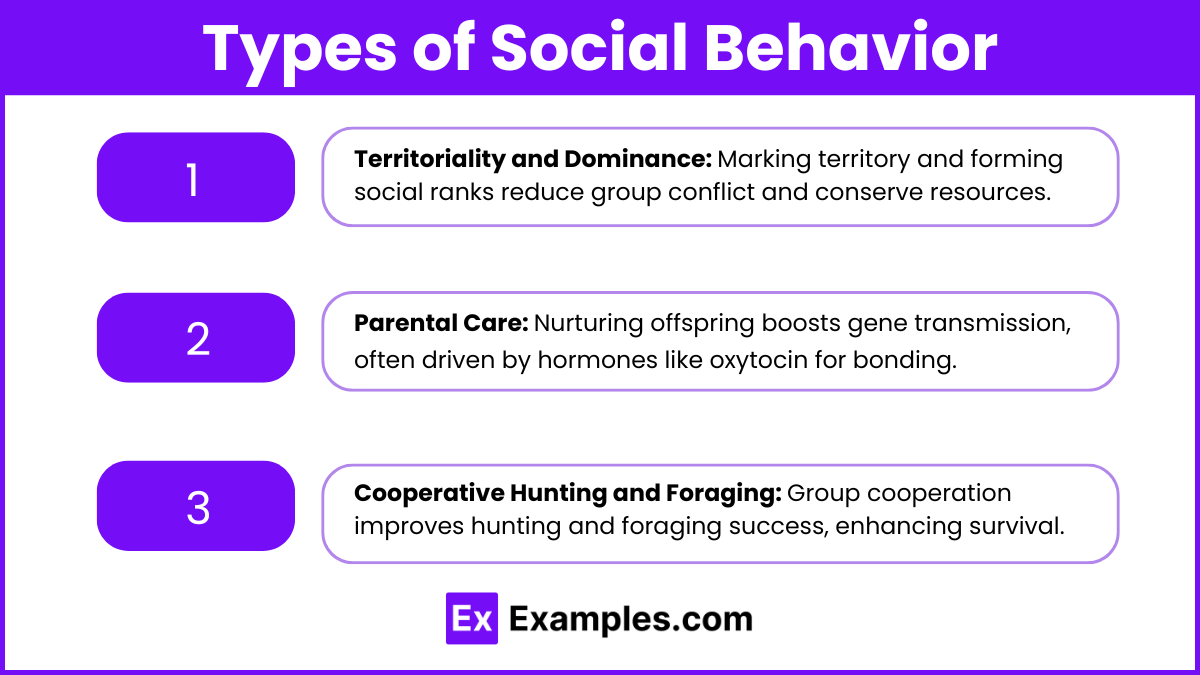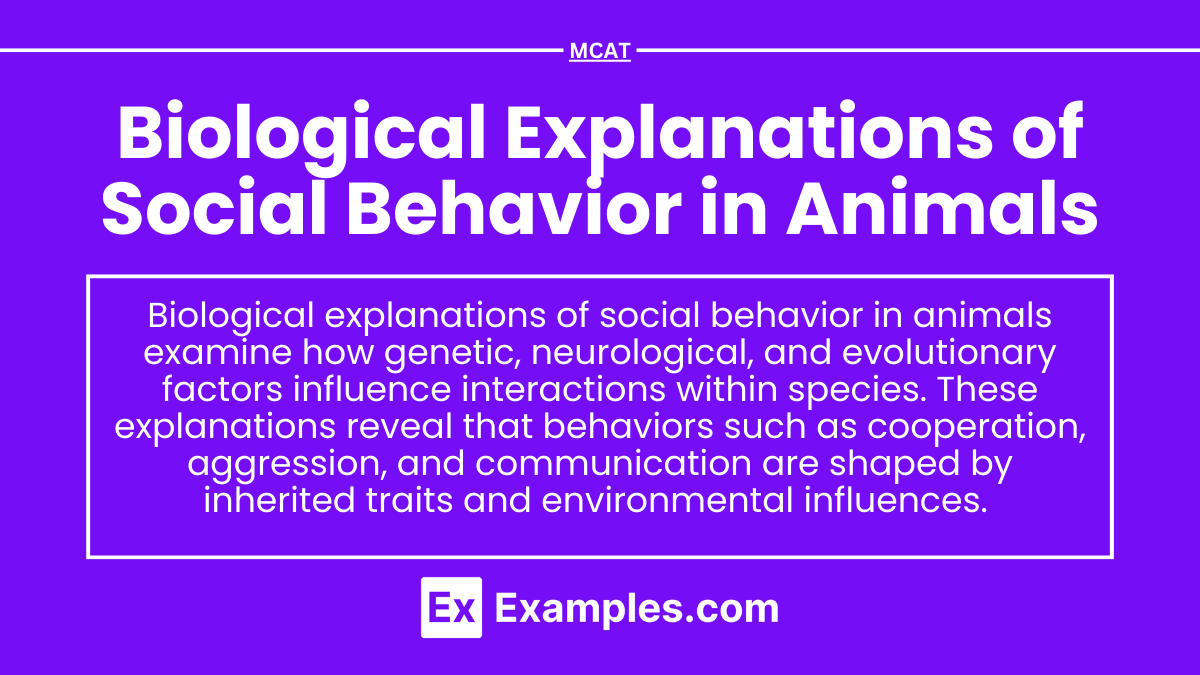Social behavior in animals is often influenced by biological factors that drive interactions, cooperation, and communication within groups. Such behaviors can be explained through mechanisms like kin selection, where animals act to benefit genetically related individuals, and reciprocal altruism, where cooperation enhances mutual survival chances. Hormones and neural processes also regulate behaviors such as aggression, mating, and caregiving, helping animals adapt to environmental pressures. Evolutionary theories suggest that social behaviors improve reproductive success and survival, favoring traits that support group cohesion and resource sharing.
Learning Objectives
In studying biological explanations of social behavior in animals for the MCAT, focus on how genetic, evolutionary, and environmental factors shape social interactions. Understand kin selection, which explains how animals may act altruistically toward relatives to promote shared genetic survival. Explore reciprocal altruism, where non-related animals engage in mutual aid with the expectation of future benefits. Learn the role of dominance hierarchies, social structures, and mate selection influenced by factors like sexual selection and parental investment. Familiarize yourself with examples across species to understand how animal behaviors support survival and reproduction, illustrating adaptive advantages and natural selection principles.
1. Introduction to Social Behavior in Animals

Social behaviors in animals encompass a range of actions that foster interaction within a species. This can include cooperation, competition, aggression, and mating behaviors. These behaviors often enhance the survival and reproductive success of individuals, benefiting both the individual and sometimes the group.
2. Evolutionary Explanations

Evolution plays a critical role in shaping social behaviors. The process of natural selection favors traits that increase survival and reproductive success. For social behaviors, those that enhance group survival, reduce individual risk, and increase the chances of reproductive success tend to be selected across generations.
- Kin Selection: Altruistic behavior directed towards relatives increases the survival of shared genes.
- Reciprocal Altruism: Actions benefitting others with the expectation of future reciprocation.
- Inclusive Fitness: Suggests that an organism’s genetic success is derived not only from personal reproduction but also by aiding kin in reproducing.
3. Types of Social Behavior

Animals exhibit diverse social behaviors, each with specific biological underpinnings and survival advantages.
- Territoriality and Dominance: Social hierarchies and territory-marking serve to reduce conflict within groups and conserve resources.
- Parental Care: By nurturing offspring, animals increase the likelihood of gene transmission to subsequent generations. Maternal behaviors often involve hormonal influences, such as oxytocin, which enhances bonding.
- Cooperative Hunting and Foraging: In species that hunt or forage in groups, cooperation increases efficiency and enhances survival, illustrating mutualistic behaviors driven by evolutionary adaptation.
Examples
Example 1. Honeybee Social Structure
Honeybees exhibit complex social behavior characterized by a highly organized colony structure. The roles within the hive, such as the queen, workers, and drones, are determined by genetic factors and environmental influences. Worker bees engage in tasks like foraging, nursing larvae, and defending the hive. This division of labor enhances the colony’s efficiency and survival, illustrating how genetic predispositions drive social roles that optimize resource allocation and reproductive success.
Example 2. Vervet Monkey Alarm Calls
Vervet monkeys utilize specific alarm calls to communicate the presence of predators. Research has shown that these calls vary depending on the type of threat, such as eagles or snakes. The ability to recognize and respond to these calls is influenced by both genetic and social learning mechanisms. Young vervet monkeys learn the significance of different alarm calls by observing adults, highlighting how biological and social learning processes work together to enhance group survival through effective communication.
Example 3. Wolf Pack Dynamics
Wolves live in packs that exhibit complex social hierarchies and cooperative behaviors. The alpha pair typically leads the pack, with other members playing distinct roles, such as hunting and caring for pups. The biological basis for these social structures includes genetic predispositions for cooperation and hierarchy, as well as hormonal influences that regulate social bonding and aggression. This cooperative behavior increases hunting success and ensures the survival of the pack, illustrating the importance of social structures shaped by biological factors.
Example 4. Ant Societies
Ants are known for their intricate social systems, where individuals perform specific roles within the colony, such as foragers, soldiers, or nurses. The biological explanation for this division of labor includes genetic factors that predispose certain ants to specific roles. Additionally, pheromonal communication plays a vital role in coordinating activities and ensuring the colony’s efficiency. These behaviors enhance the colony’s survival by optimizing resource use and defense mechanisms against threats.
Example 5. Altruism in Vampire Bats
Vampire bats display altruistic behavior by sharing food with others in their social group. When a bat fails to feed, it may solicit food from another bat that has successfully fed. This behavior can be explained by kin selection, where helping relatives increases the chances of shared genetic material being passed on. Additionally, reciprocal altruism comes into play, as bats that share food are more likely to receive help in the future. This mutual aid enhances the survival of individuals within the group, demonstrating how biological explanations underpin social behavior in these animals.
Practice Questions
Question 1
Which of the following concepts explains why certain social behaviors, like altruism, may evolve among animals?
A) Kin Selection
B) Social Learning
C) Dominance Hierarchy
D) Territoriality
Correct Answer: A) Kin Selection
Explanation:
Kin selection is a biological concept that suggests individuals may exhibit altruistic behaviors towards their relatives to increase the chances of shared genes being passed on to future generations. By helping relatives, animals ensure the survival of genetically similar individuals, which enhances their inclusive fitness. Social learning refers to acquiring behaviors by observing others, dominance hierarchy relates to the social structure of a group, and territoriality involves defending a specific area against others, but these do not directly explain the evolution of altruistic behaviors as kin selection does.
Question 2
What role do neurotransmitters such as oxytocin play in social behavior among animals?
A) They inhibit aggressive behavior.
B) They promote social bonding and trust.
C) They enhance territorial disputes.
D) They regulate feeding behaviors.
Correct Answer: B) They promote social bonding and trust.
Explanation:
Oxytocin is often referred to as the “bonding hormone” because it plays a crucial role in social bonding, trust, and affectionate behaviors in many species, including humans. Research shows that oxytocin levels increase during social interactions, leading to stronger social ties. While it may have some influence on reducing aggression indirectly, its primary function in the context of social behavior is to enhance bonding. Territorial disputes and feeding behaviors are more influenced by other hormones and environmental factors.
Question 3
In a study of vervet monkeys, researchers observed that young monkeys learn specific alarm calls by observing adults. This phenomenon is best explained by which of the following?
A) Genetic predisposition
B) Reciprocal altruism
C) Social learning
D) Dominance hierarchy
Correct Answer: C) Social learning
Explanation:
Social learning occurs when individuals learn behaviors through observation and imitation of others rather than through direct experience. In the case of vervet monkeys, young individuals learn the significance of different alarm calls by watching and listening to adult members of their group. While genetic predisposition can influence the ability to communicate, the learning process here specifically involves observing social interactions, making social learning the most relevant explanation. Reciprocal altruism refers to helping others with the expectation of future help, and dominance hierarchy describes social ranking within a group, neither of which applies to the learning of alarm calls.


